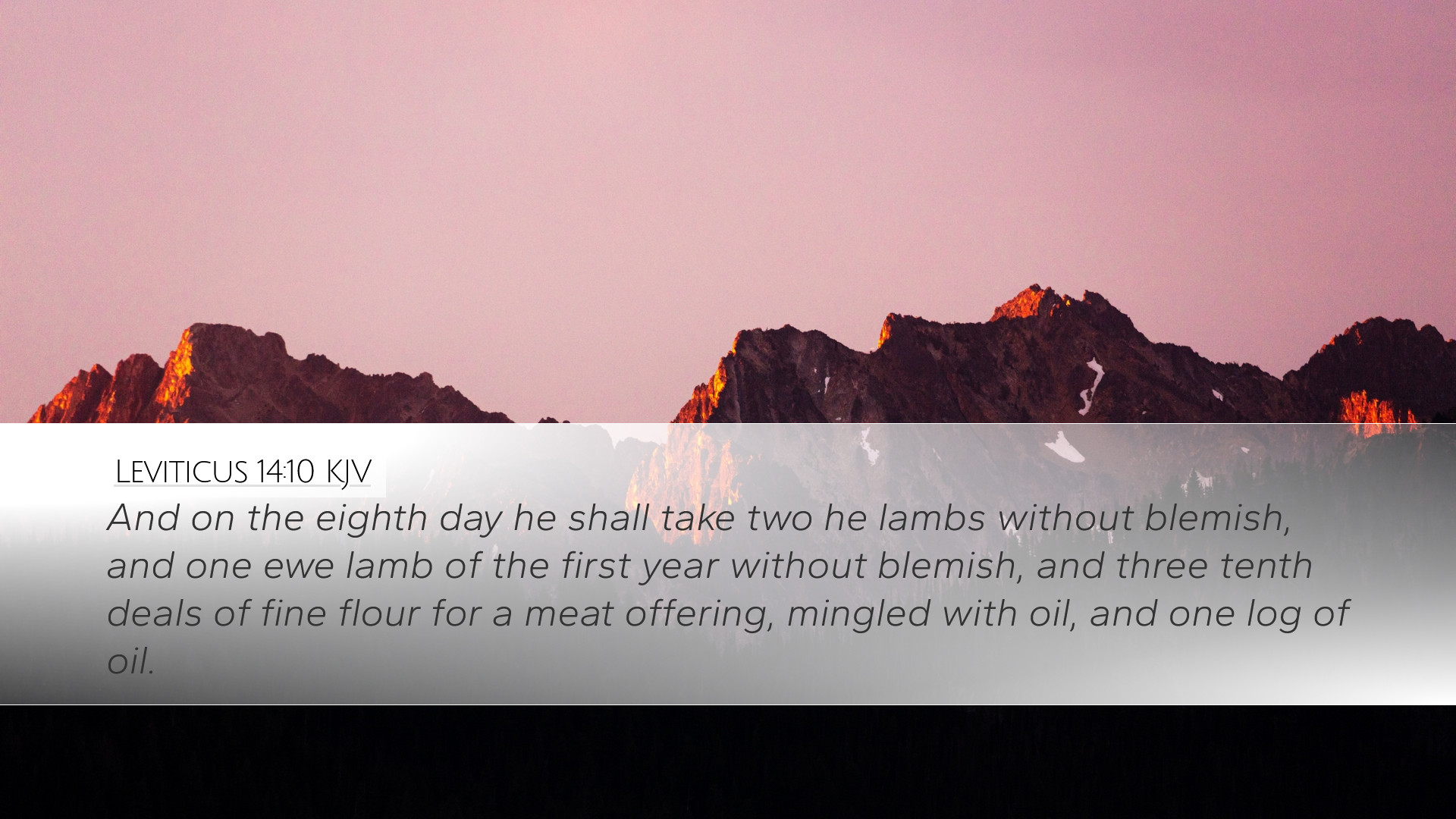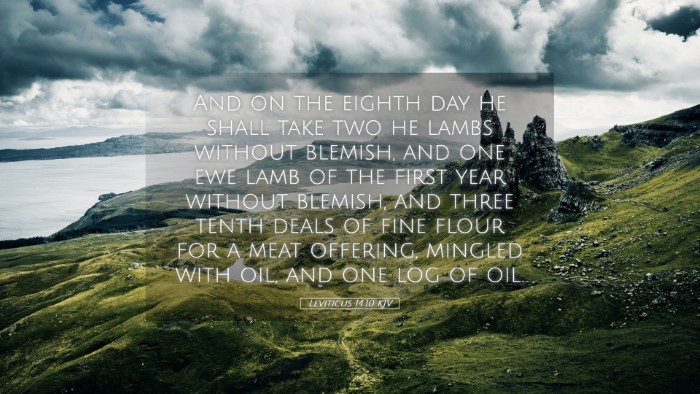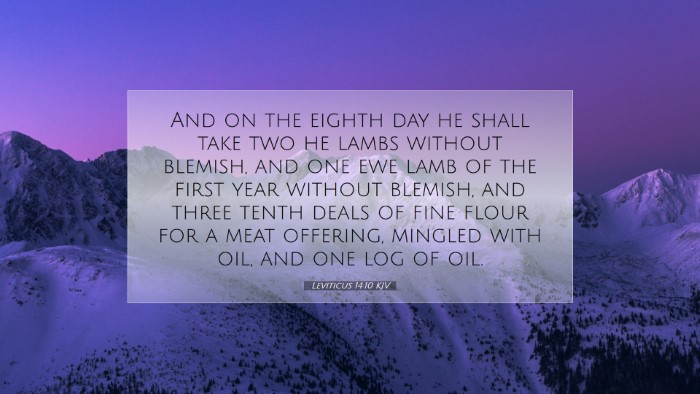Commentary on Leviticus 14:10
Leviticus 14:10 states:
"And on the eighth day he shall take two male lambs without blemish, and one ewe lamb of the first year without blemish, and three-tenth deals of fine flour for a meat offering, mingled with oil, and one log of oil."
Introduction
The passage of Leviticus 14:10 is part of a larger section concerning the cleansing of lepers, delineating the ritual a person must undergo to be restored into the community after their condition. The intricacies of these regulations reveal the holiness of God and the seriousness with which He views sin and its consequences.
Examination of the Text
Within the context of Leviticus, leprosy is often representative of sin and its isolating effects. The prescribed offerings include:
- Two male lambs without blemish
- One ewe lamb of the first year without blemish
- Three-tenth deals of fine flour mingled with oil
- One log of oil
Commentary Insights
Matthew Henry's Commentary
Matthew Henry notes that the choice of lambs signifies the value of purity in offerings before God. The emphasis on the unblemished condition underlines the necessity for perfection in approaching a holy God. The inclusion of flour mingled with oil further symbolizes the necessity of the Holy Spirit in spiritual offerings. Henry also highlights how this ritual serves as a type and shadow pointing toward the ultimate sacrifice of Christ.
Albert Barnes' Commentary
Albert Barnes elaborates on the instruction for the cleansed leper to bring offerings on the eighth day, emphasizing the significance of the number eight, which implies a new beginning and resurrection. He remarks on how the repetition of unblemished animals is indicative of the moral and spiritual integrity required in approaching God. Barnes concludes that this passage reveals God’s deep concern for the sinner’s return to fellowship and the restoration process through sacrificial atonement.
Adam Clarke's Commentary
Adam Clarke focuses on the practical aspects of the offerings, interpreting each component's significance. The requirement of both male and female animals points to the need for comprehensive sacrificial acknowledgment for both personal and communal sins. Clarke also explores the underlying theology of atonement intertwined with these rituals, presenting them as foreshadows of Christ’s sacrificial death and the eventual restoration of humanity. He underscores the oil, again a metaphor for the Spirit, which implies that mere rituals without spiritual infusion would be inadequate.
Theological Significance
The offerings described in Leviticus 14:10 have far-reaching implications beyond the immediate ritualistic setting. They feed into larger biblical narratives concerning:
- Atonement: The necessity for restitution in sin.
- Restoration: The reintegration of the sinner into community and worship.
- Holiness: The requirement of holiness not just in offerings, but in the lives of the worshippers.
- Typology: The foreshadowing of Christ’s atoning work through the symbolism of unblemished offerings.
Applications for Today
This passage from Leviticus resonates deeply for today’s believers in several practical applications:
- Understanding Atonement: Acknowledge the depth of atonement needed in personal and corporate repentance.
- Holiness in Worship: Recognize the importance of approaching God with sincerity and purity of heart.
- Spiritual Restoration: Engage in practices that seek holistic restoration - both physically and spiritually.
- Community Engagement: Foster environments that encourage healing and acceptance, reflecting God's love and forgiveness.
Conclusion
Leviticus 14:10 serves not only as a historical and cultural reference for ancient Israel but also as a beacon of God's ongoing commitment to redemption. The profound understanding drawn from public domain commentaries reveals the layers of meaning embedded within this single verse. As students of scripture, theologians, and pastors delve into these insights, they are encouraged to articulate and embody the principles of holiness, atonement, and communal restoration reflective of God’s character.


